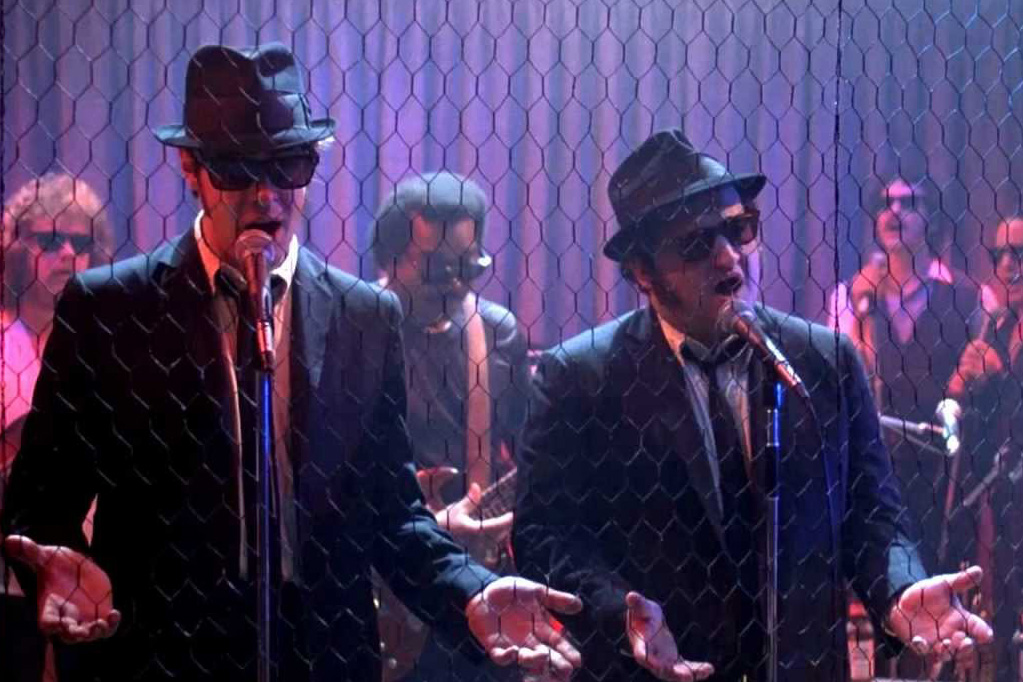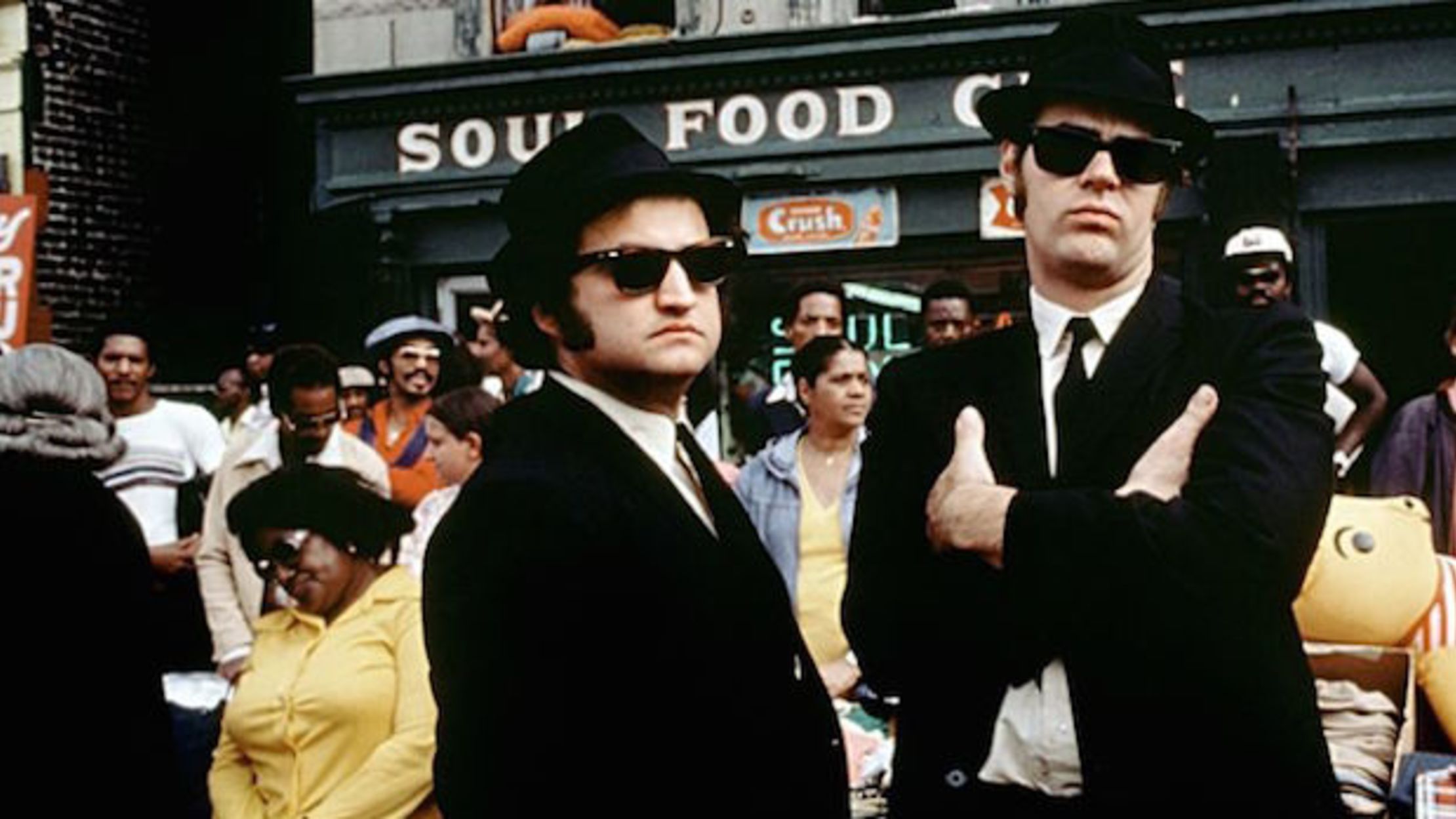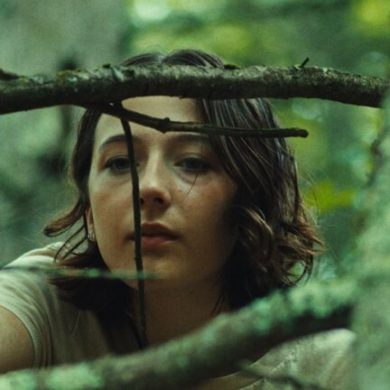Back in March I celebrated the 40th anniversary of Australian classic Breaker Morant here on The Curb. Why stop there? The celluloid class of 1980 is a particularly fascinating one, with many films cut from a 1970s cloth but hinting at the 80s as we’d come to know them onscreen. The Blues Brothers and Fame, two American musicals released mid-1980, occupy that liminal sweet spot between the decade gone by and the decade ahead, and both would be very, very different films if produced a few years earlier or later.
In the end credits to Mallrats, Kevin Smith thanks John Landis (along with John Hughes) “for giving me something to do throughout my youth on Friday night”. I’d second that sentiment: as the director of The Blues Brothers, An American Werewolf in London, Trading Places, Spies Like Us, The Three Amigos, and Coming to America, among others, Landis’ work probably occupied more time in my VCR than any other director not named Spielberg or Lucas.
A commercial contemporary of both – and a brief collaborator with Spielberg on the ill-fated Twilight Zone: The Movie – Landis shares with Spielberg and Lucas that alchemic mix of deadly sincerity and ironic, calculated detachment that characterises their best work. There are other shared qualities as well. In Blockbuster, his study of the emergence of the movie blockbuster, author Tom Shone spends a lot of time highlighting what differentiates Jaws and Star Wars from their predecessors. Jaws is distinguished from its disaster movie precursors The Towering Inferno and The Poseidon Adventure – bloated, flat-footed, silly films that treat themselves like Doctor Zhivago with pyrotechnics – by its nimbleness and lightness of touch, its economy and colourful characterisation, with Richard Dreyfuss’ Hooper a Bugs Bunny-esque figure both within and removed from the story (see this, or this) unlike the stoic stiffs of Irwin Allen movies. Star Wars, meanwhile, is distinguished by its speed and its pluck, in sharp contrast to stately-paced predecessors like 2001: A Space Odyssey and Silent Running, not to mention subsequent space sagas like Star Trek: The Motion Picture and The Black Hole which capitalised on Star Wars’ success but missed this vital ingredient.
The Blues Brothers, the jewel in the crown of Landis’ career, is similarly a hip, fast-moving, knowing take on dog-eared genres and tropes: a “save the orphanage” musical where the hero is not a clerical-collared Bing Crosby, but an offbeat duo of singing and dancing Saturday Night Live alumni in suits, Ray-bans and fedoras. Jake (John Belushi) and Elwood Blues (Dan Aykroyd) are blues performers and criminal types reunited after Jake’s stint in prison. When the Catholic orphanage where they were raised is threatened with closure, Jake and Elwood launch a “mission from God” to stage a fundraiser to save the orphanage, a journey that sees them cross paths with Cab Calloway, James Brown, Aretha Franklin, Ray Charles, disgruntled police officers (topical!), disgruntled hillbillies, disgruntled Ku Klux Klan members (also, sadly, still topical), and a disgruntled ex (played by Carrie Fisher). Ridiculous amounts of vehicular mayhem and destruction are thrown in for good measure.
While the dyed-in-the-wool auteurist in me opened this piece with Landis, ‘The Blues Brothers’ as a concept was cooked up – or perhaps coked up is more apt – by Aykroyd and Belushi several years earlier. As chronicled in Nick de Semlyen’s excellent book Wild and Crazy Guys, Aykroyd and Belushi conceived the Blues Brothers at the height of their Saturday Night Live fame, first performing at Aykroyd’s New York speakeasy, The Blues Bar, then serving as an SNL warm-up. Jake and Elwood made their proper SNL debut in 1978, then performed as opening act for Steve Martin on the comedian’s stadium tour, and released their own album shortly thereafter.
Aykroyd, a great talent and a delightful giant weirdo, deserves particular credit for reconceiving and fleshing out the world of the Blues Brothers for film. While SNL has nurtured many gifted and funny performers, there’s an argument to be made that Aykroyd is the only cast member who could be considered a comedic visionary in the same vein as the Monty Python crew. Both The Blues Brothers and Ghostbusters, among others, sprang from his fertile imagination, though in both instances his earliest scripts were overreaching and un-filmable: his first Blues Brothers script clocked in at 324 pages and its author-star cited the lengthy period epics 1900 and Barry Lyndon as touchstones. Aykroyd’s best work as both actor and creator is generally when he’s reined in by a solid director and/or paired with someone onscreen who can level his excesses: pure undiluted Aykroyd straight from the tap – as seen in his directorial debut and swansong, the aggressively grotesque Nothing but Trouble – is an especially acquired taste. In Landis, then, Aykroyd found a perfect collaborator and editor who pared his sprawling opus into a luxurious but still palatable – and downright delicious – 133 minutes.
In Belushi, meanwhile, Aykroyd found his greatest muse, and it speaks to the huge import of their partnership – both personal and creative – that over the last 30 years one of Aykroyd’s pet projects has been the House of Blues restaurant and bar chain, nothing less than a 12-city shrine to his best friend and collaborator. Belushi’s struggles with substance abuse are well-documented, and The Blues Brothers shoot was not exempt. Landis, who’d directed the actor in his other signature film performance, as Bluto in Animal House, recalls that “it was terrifying. It’s like a drowning person: you jump in the water to try and save them and they punch you in the face” (Wild and Crazy Guys, p. 43). Yet Belushi and Aykroyd are a terrific pair onscreen, and the film is a testament to a talent lost far too early, albeit spared some of the cinematic indignities that would pepper other SNL alumni’s filmographies as the 80s and 90s unfolded (Aykroyd’s very much included).


While it is a simplification to say an older film would not be made today – not to mention giving dismissive side-eye to the present through a pair of nostalgia goggles – The Blues Brothers would most definitely never be made today, for three reasons. Firstly, expense. The film’s budget ballooned considerably, with an end cost of $32 million USD. That doesn’t sound particularly expensive now, but in 1980 was a substantial sum, and put The Blues Brothers alongside other late 70s spiralling-out-of-control productions like Apocalypse Now, Heaven’s Gate, Star Trek: The Motion Picture, and 1941. Indeed, The Blues Brothers was jokingly dubbed 1942 after the latter, Spielberg-directed/Belushi & Aykroyd-co-starring Pearl Harbour ‘comedy’. Although The Blues Brothers turned a profit, and is far more watchable than any of the other titles in that quintet – though all have their fans, and Apocalypse Now is rightly acclaimed – comedy today is a cheap business: the biggest blockbuster budgets are almost exclusively the domain of Disney, Marvel, DC, and a few select properties, so a comedy of The Blues Brothers’ scale and world-building ambition would get short shrift.
Secondly, cultural appropriation. The Blues Brothers is, to my mind, sincere in its appreciation of blues culture and artists. As Nick de Semlyen writes, “Aykroyd and Belushi were accustomed to mocking everyone and everything. But their new endeavour was irony-free. They took the music seriously, deadly seriously” (Wild and Crazy Guys, p. 37). Jerry Garcia of The Grateful Dead, after seeing Aykroyd and Belushi perform live, professed himself not a fan, calling their act “too good to be a parody, and not good enough to be good for what it was” (p. 38). The two stars would probably concur, and the movie highlights the charming dinkyess of Belushi and Aykroyd’s homage act, while the real giants of the genre – Calloway, Franklin, Charles, Brown – shine bright in their musical appearances. Nonetheless, as noted in a recent Guardian piece, to modern sensibilities The Blues Brothers could be regarded as a rather un-PC exercise in cultural appropriation. Having said that, I can think of much, much worse examples from both the 1980s – see 1986’s Soul Man, in which C. Thomas Howell pretends to be black to secure a Harvard scholarship – and indeed 1980 itself, such as the profitable re-release of Disney’s romantically racist Song of the South (on Martin Luther King Day no less).
And thirdly, the film’s car stunts, which transplant the Dixie-fried relish for vehicular mayhem of Smokey and the Bandit and its ilk to the big smoke. Landis’ early films – National Lampoon’s Animal House, The Blues Brothers, An American Werewolf in London – all have scenes of wanton, madcap destruction. A former stunt performer, Landis loved smashing and crashing things – vehicles, people, windows, objects – and there’s a tangible sense of abandon and danger in these sequences. That impulse was curbed noticeably in his work following the accidental deaths on the set of Twilight Zone: The Movie, and rightly so. But that 10-year-old-smashing-and-piling-on-matchbox-cars energy in on full display in The Blues Brothers. The abovementioned Guardian piece also noted visual echoes of recent events in the film, in images of vehicles cutting through crowds and heavily armed personnel converging in recognisable public spaces; while entirely unintentional, it’s the practical, tangible dimension of these scenes that gives them a whiff of prescience. Crazy stunts will continue in films as long as the likes of Tom Cruise and Christopher Nolan are active, but it’s unlikely in this decidedly (and, again, rightly) post-Twilight Zone landscape – not to mention this age of CGI saturation – that we’ll see gonzo stunt work again on the scale of The Blues Brothers, particularly in service of a comedy.
While the above points to The Blues Brothers as a time capsule, the film remains evergreen viewing. Its music, scale, stunts, and stars (both musical and comedic) are key ingredients, as is the particular combination of hipness and classicism that characterises Landis’s best 1980s work. Though his films starred the cutting-edge comedians of the era – Aykroyd, Belushi, Eddie Murphy, Chevy Chase, Steve Martin – they’re also throwbacks to classic Hollywood films and formulas in some way: Spies Like Us is a Hope & Crosby update, The Three Amigos is a love letter to Westerns and Old Hollywood, Coming to America is a comedy in the Ernst Lubitsch mould, and so on. This classicism combined with impeccable craftsmanship – Landis knows how to frame and execute a joke and how to setup and payoff a gag – mean The Blues Brothers and his other heyday films remain largely fresh viewing, even as some of his stars more ‘edgy’ flicks have aged poorly (again, Aykroyd’s very much included).
On a scene-by-scene basis The Blues Brothers offers riches upon riches. I particularly love the first car chase through Dixie Square Mall; the scene at Chez Paul restaurant where Jake and Elwood’s aggressively poor table manners pressure the maître d’ to re-join the band; Aretha Franklin’s barnstorming performance of ‘Think’ and Ray Charles’ delightful rendition of ‘Shake your Tail Feather’; and the list goes on. But my favourite scene – perhaps my favourite four minutes of celluloid – doesn’t involve car chases, sloppy dining, or singing and dancing the blues… though it does involve singing and dancing of another kind, is when Jake and Elwood erroneously book a gig at a hillbilly dive bar that plays ‘both kinds’ of music: “Country and Western”. Much 1980s comedy is built on contrasts – slobs vs. snobs, nerds vs. jocks, etc. – and inserting somebody where they don’t belong and watching them wreak havoc, be victimised, or a combination of the two. Sometimes it pays hilarious dividends – see Rodney Dangerfield and Bill Murray in Caddyshack – and sometimes it’s terribly offensive – see every visit to the Blue Oyster Bar in the Police Academy films. Here Jake and Elwood are out of their element – the crowd response to their rendition of ‘Gimme Some Lovin’ is downright hostile (“That ain’t no Hank Williams song…”) – but the city slickers manage to sway the crowd by performing ‘Rawhide’ and ‘Stand by your Man’. What makes the scene especially endearing is that it isn’t cruel, either at the crowd’s or Jake and Elwood’s expense: the ‘Good Ol’ Blues Brothers Boys Band’ endear themselves to the rowdy audience, and Elwood and – begrudgingly – Jake end up digging their new song-list too. It’s a hugely enjoyable scene, with the constant visual and aural accompaniment of breaking beer bottles adding an extra layer of mirth to it all (again, Landis likes smashing things).




